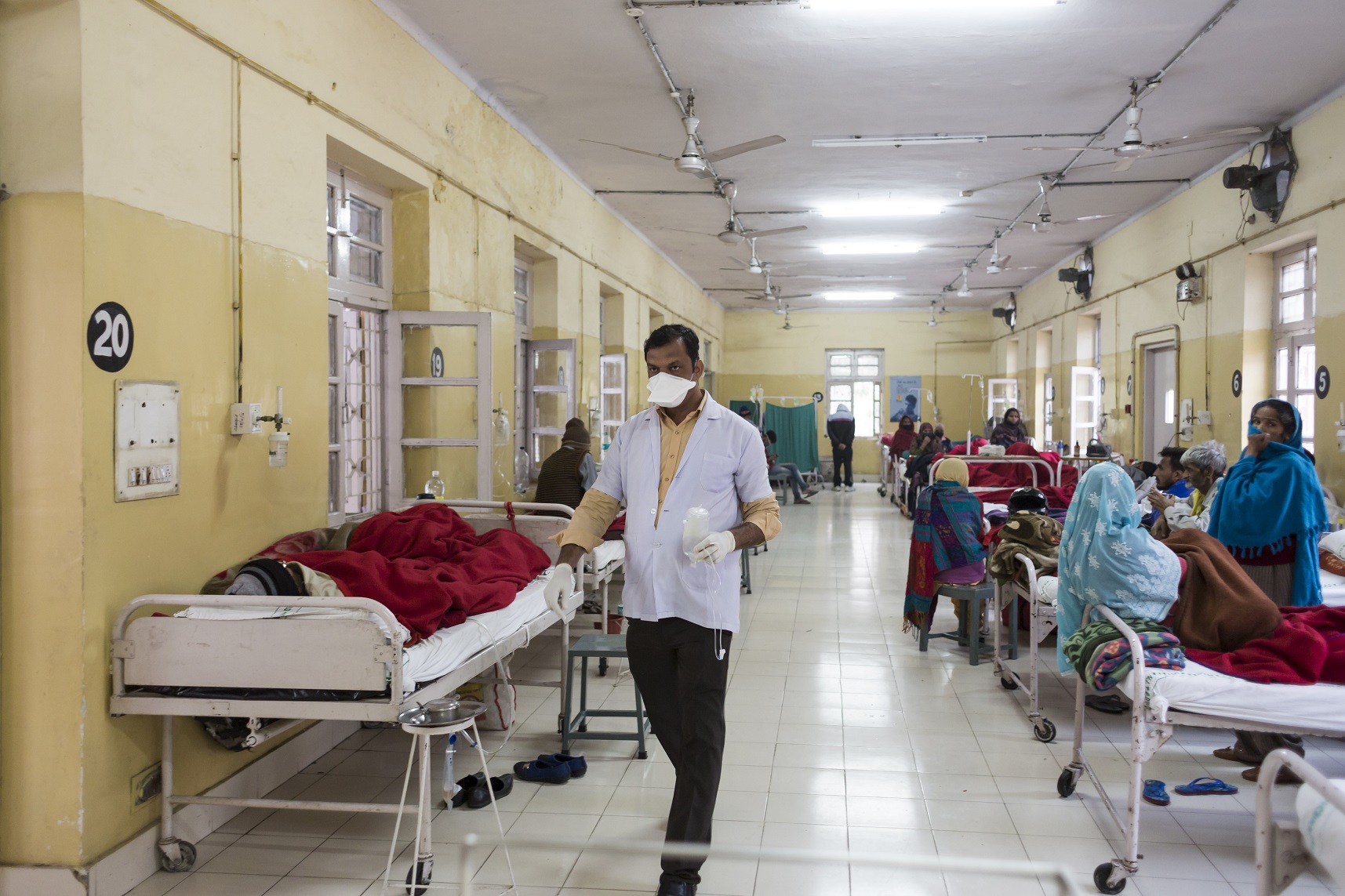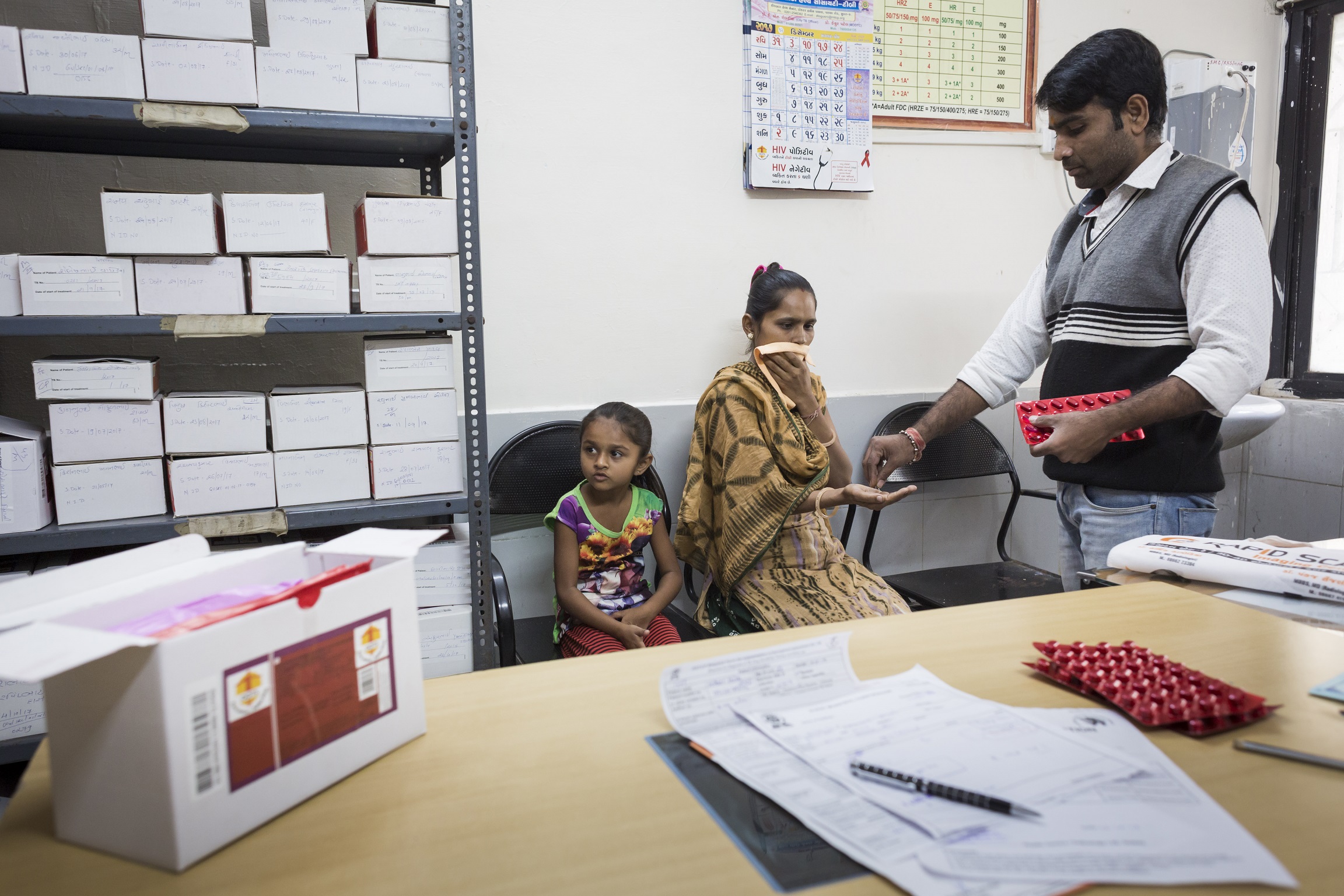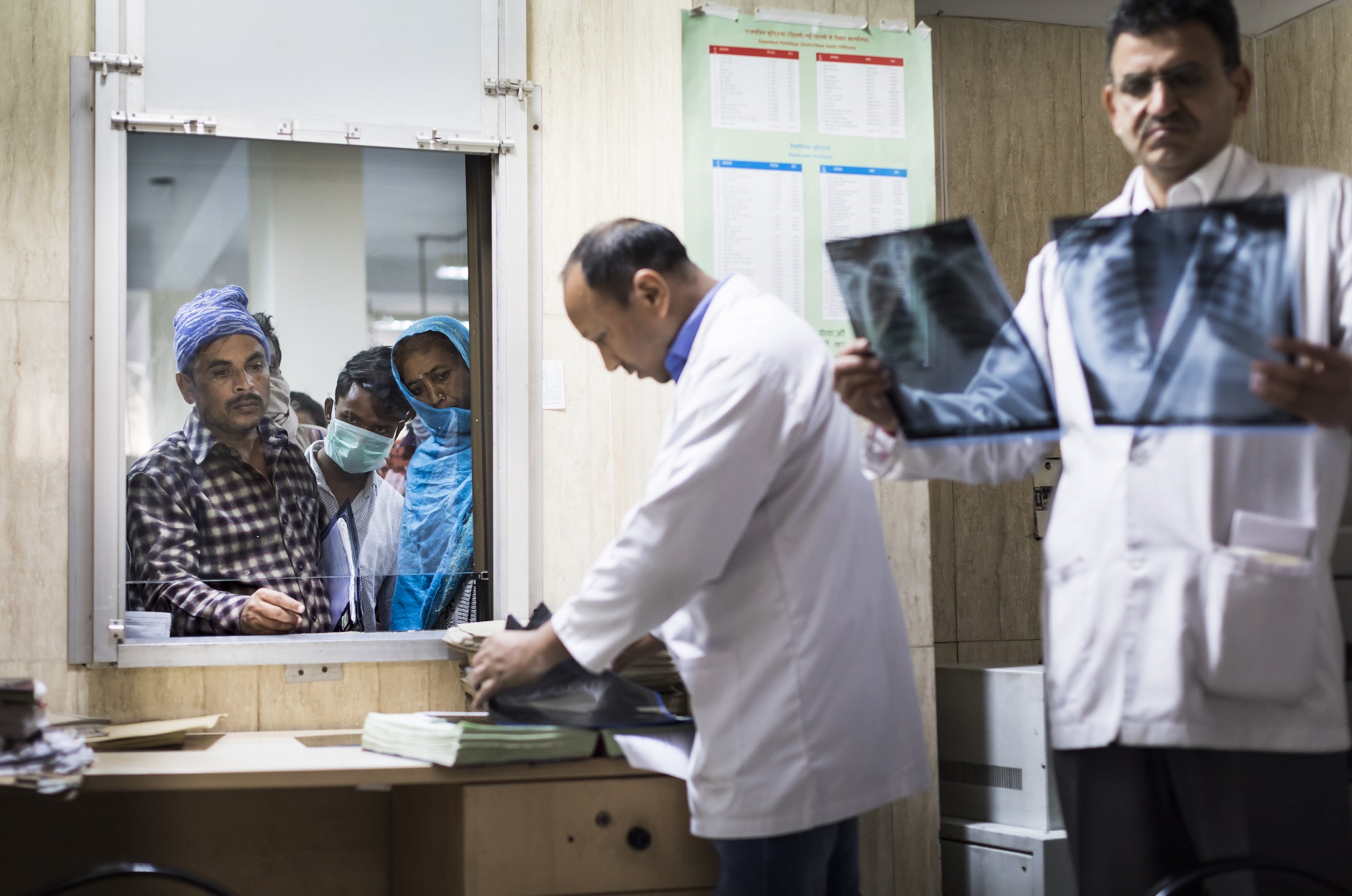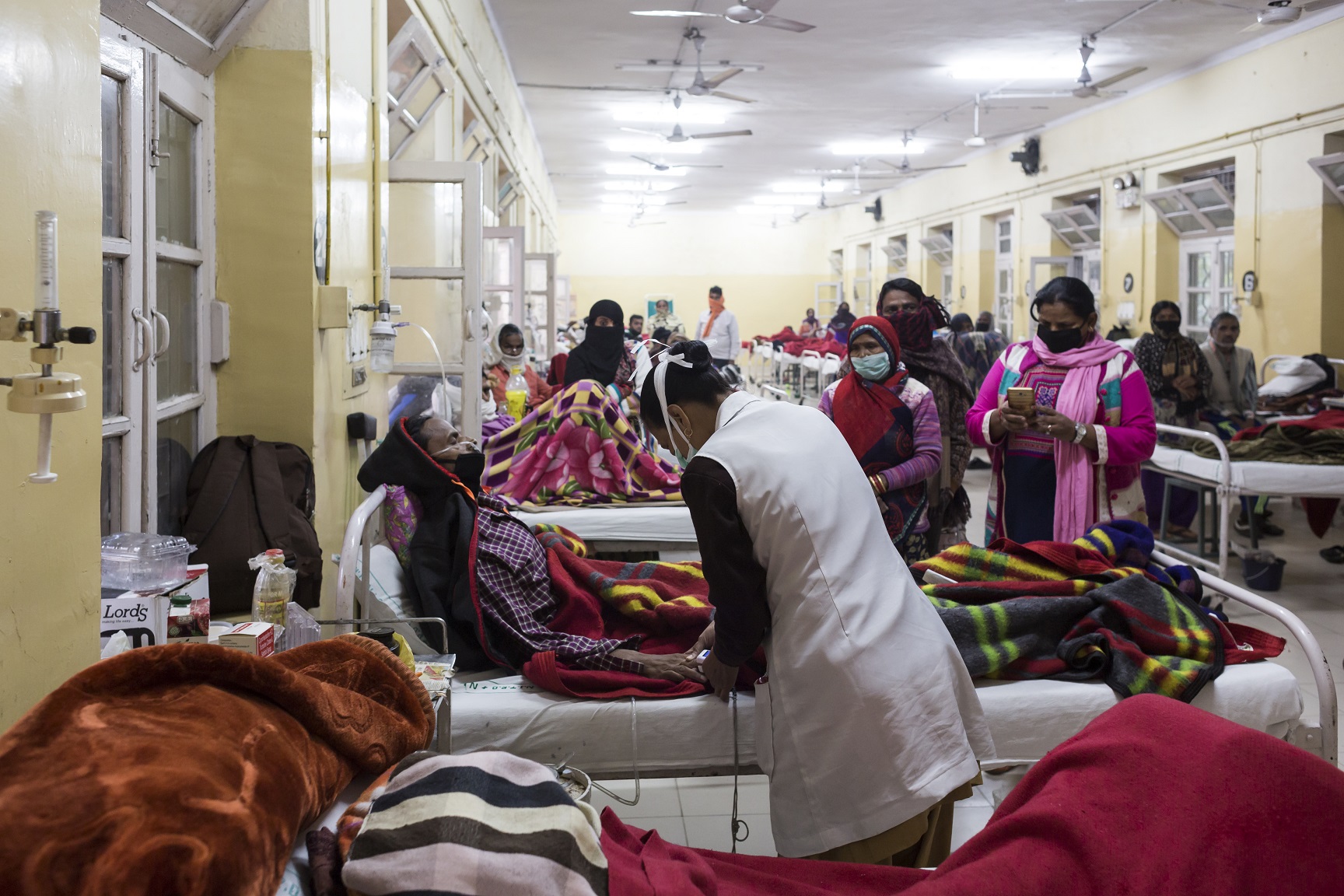Silent Killer: This Unique Initiative Aims To Help 1.6 Million People Battling TB
“Having a person dedicated to my progress, inquiring about my welfare, reminding me to take the medication on time and cheering me up was so reassuring. In many cases, the treatment coordinator visits homes and meets patients at a place of their convenience to give them confidence and strength; something family members also don’t do,” she adds.

In November 2018, 50-year-old Nandini (name changed), an HR Executive in a software firm in Bengaluru, found a lump at the back of her neck. She tried traditional ways of treating it, but when it persisted, she visited an ENT specialist.
He was not happy with how it looked and sent her for further investigation. She was referred to a private hospital, one of the hubs identified under the Joint Effort for Elimination of Tuberculosis (JEET) Project. It is one of the country’s largest public-private partnerships (PPP) working towards eliminating tuberculosis (TB).
A clinical examination was done, and Nandini’s sputum sample and lymph node biopsy were taken and sent for testing of Tuberculosis. When reported positive, she was recommended for surgery of the lymph node.
Numb with shock, she was unable to accept she had TB. She lived in a nice neighbourhood, followed excellent standards of hygiene, and had limited interaction with crowds. As the sole breadwinner of her family, she worried about how she would deal with the prolonged treatment, expenditure and stigma.
Dr Sanjay Sarin, Head, FIND India, says, “Nandini is not wrong in questioning ‘why me?’ The TB trajectory is changing. Increased risk factors are making people from all walks of life vulnerable to TB–people are oblivious to their condition and go about life without treatment, unknowingly infecting others. While common symptoms like cough that lasts two or more weeks, coughing up blood, unexplained weight loss, fatigue, night chills and fever may be experienced, they may still not get attributed to TB, delaying diagnosis and treatment. India’s biggest challenge therefore has been to create more awareness on TB and bring missing cases under the ambit of treatment.”

India has the highest burden of TB in the world, accounting for over 27 per cent global incidence. With an estimated annual incidence of 2.7 million cases, 2.15 million were reported to the National Tuberculosis Programme (NTP) while the remaining were left undiagnosed and untreated or in the care of the private sector.
Data from the National Tuberculosis Elimination Programme (NTEP), shows a decline in prevalence and mortality rates of TB in the last decade. As per WHO data, incidence of TB dropped from 204 per 100,000 in 2017 to 199 in 2018. However, this incidence indicates a slow decline, “missing” more than one million patients who are neither notified nor treated as per protocol.
Earlier, TB was known to affect the weaker sections of society in low- and middle-income countries. While the latter is true, it is no longer a disease of the poor. Undernutrition, indoor air pollution, smoking and alcohol addiction, lack of awareness, and poverty are barriers that stall TB elimination across socio-economic groups.
The Foundation for Innovative New Diagnostics (FIND) India, Centre for Health Research and Innovation, and William J Clinton Foundation, joined hands in 2018, forming a consortium to implement the JEET Project (Joint Effort for Elimination of Tuberculosis) funded by The Global Fund. Launched in January 2018 covering 45 cities in 23 states, it addresses two of the biggest concerns of the TB programme today–to identify prospective TB patients diagnosed and treated in the private sector, and ensure complete treatment of notified patients.
The project, implemented under the Central Tuberculosis Division (Ministry of Health and Family Welfare) in close collaboration with State TB Offices, WHO, and other stakeholders, aims to reach 1.6 million TB notifications, while facilitating successful treatment outcomes of notified patients by the end of March 2021.
Win-win for patients and doctors

Thanks to JEET Project’s effective hub and spoke model (smaller private hospitals, nursing homes, and clinics acting as ‘spokes’, being connected to nearby larger hospitals serving as ‘hubs’) and linkages with district TB programme for free diagnosis and drugs, the time taken to bring the patient on a systematic and emphatic treatment platform is lesser.
Field staff at the hub collect sputum samples, transport them to the nearby government testing facility, collect lab reports, notify a patient, and if found positive, assign them a treatment coordinator, while a doctor oversees the case.
The private clinic or doctor making the referral gets a financial incentive for every notification. Positive patients get a direct benefit transfer (DBT) of Rs 500 under the Nikshay Poshan Yojana as a nutritional incentive every month. In many cases, the money may not be spent solely on nutrition, but is a major attraction for many more to continue with treatment.
Nandini’s recovery and experience with JEET made her a strong advocate for promoting early diagnosis, the importance of adhering to treatment and trusting the government health system. She attributes her recovery to the quality of care she received at the hospital and the support from the treatment coordinator who helped her come to terms with her condition.
She was initially devastated and found it very hard to accept herself as a “TB victim”. She had heard of stories in her grandparents’ village where TB patients were treated as outcasts and banished out of the village or made to stay in an outhouse. She was surprised to note that the stigma associated with the disease had not entirely been addressed even in present times. Recently, her office driver had broken off his engagement to a girl who was diagnosed with TB.

Continuous engagement with her treatment counsellor helped her understand the changes in her body and mood. She was cautioned about possible adverse drug reactions, so when there were changes in the colour of her urine, when she had skin rashes or suffered discomfort, she did not panic. Hand holding by the JEET team and the hospital’s treatment coordinator persuaded her husband’s brother to help them financially when Nandini had to take leave from work.
“Having a person dedicated to my progress, inquiring about my welfare, reminding me to take the medication on time and cheering me up was so reassuring. In many cases, the treatment coordinator visits homes and meets patients at a place of their convenience to give them confidence and strength; something family members also don’t do,” she adds. Of course, they maintain the highest standards of hygiene and protection and use their example to guide TB patients and families on protecting themselves from infection.
JEET’s long-term objective is to facilitate the engagement of more practitioners for increased case notification and build seamless linkages to the public sector for testing and free Anti-TB medication. Overall, it represents a highly sustainable PPP model.
With a spurt of TB cases and a lot of hidden cases still, doctors in the public health system admit that the situation is overwhelming. Dr V Kasargowda, who runs a private clinic in Bengaluru, agrees that JEET has been supportive to patients and providers. In his experience, prior to JEET, defaulters in TB treatment were common. Patients discontinued treatment when there was slight relief thinking it to be unnecessary to complete the full course. Also, in many cases, side effects were difficult to manage.
The counselling support on every notified case under JEET is helping ensure patients are fully treated. Free medicines under the government programme and a monthly incentive of Rs 500 given to patients for their diet and nutrition are significant contributors.
Some states have committed to taking over JEET’s tested model through the National Tuberculosis Elimination Programme (NTEP). This means they will match the support JEET has provided, but with their own state government health system infrastructure and healthcare personnel without any break in the disbursement of services.

Eliminating TB by 2025 may still be a challenge, but the effort to reach missing cases and ensure their treatment completion is a huge relief. Families across the world, especially in overpopulated, developing countries with a stretched public health infrastructure have been known to get devastated by the disease. The social stigma and discrimination, financial burden/debt, loss of employment and the resultant stress on the patient and his/her family, have made their recovery long drawn and complex.
The biggest challenge in making the PPP model successful is in its seamless adoption by the state government. The bottlenecks are usually related to overlapping of roles, taking credit for any numbers that result as part of the joint initiative (since both the government and private partner would like to show impact attributed to their efforts) and the final transition from pilot phase to a more sustained period.
Dr Shubhakar, Pulmonologist at Kamineni Hospital in Hyderabad, says, “the core issue is to bring in private practitioners since more than 50 per cent of patients go to the private sector. Duplication in notification can be weeded out since our role as private doctors is to support the government and ensure improved health at all levels. We are confident of the impact PPP will have on TB control and treatment. In 2018, notifications went up from 5 per 1 lakh population to 148 for Telangana alone.”
Also Read: ‘The Ticking Time Bomb’: A Doctor on Whether TB Can Be Eliminated From India
Nandini, despite being an educated woman working in the private sector, admits that if she had not found JEET’s daily support, she may have discontinued treatment. This would have left her infectious and symptomatic as well as weaker, with lower immunity and chances of relapse. This is why she wants to do her bit by stepping forward to talk to other patients and their families, showing them how JEET’s help kept her on course, ensured she completed treatment, battled side-effects, got back to work and resumed her normal life.
(Written by Taru Bahl and Edited by Shruti Singhal)
Images Courtesy: FIND/Ben Phillips
Like this story? Or have something to share?
Write to us: [email protected]
Connect with us on Facebook and Twitter.
If you found our stories insightful, informative, or even just enjoyable, we invite you to consider making a voluntary payment to support the work we do at The Better India. Your contribution helps us continue producing quality content that educates, inspires, and drives positive change.
Choose one of the payment options below for your contribution-
By paying for the stories you value, you directly contribute to sustaining our efforts focused on making a difference in the world. Together, let’s ensure that impactful stories continue to be told and shared, enriching lives and communities alike.
Thank you for your support. Here are some frequently asked questions you might find helpful to know why you are contributing?


This story made me
-
97
-
121
-
89
-
167













